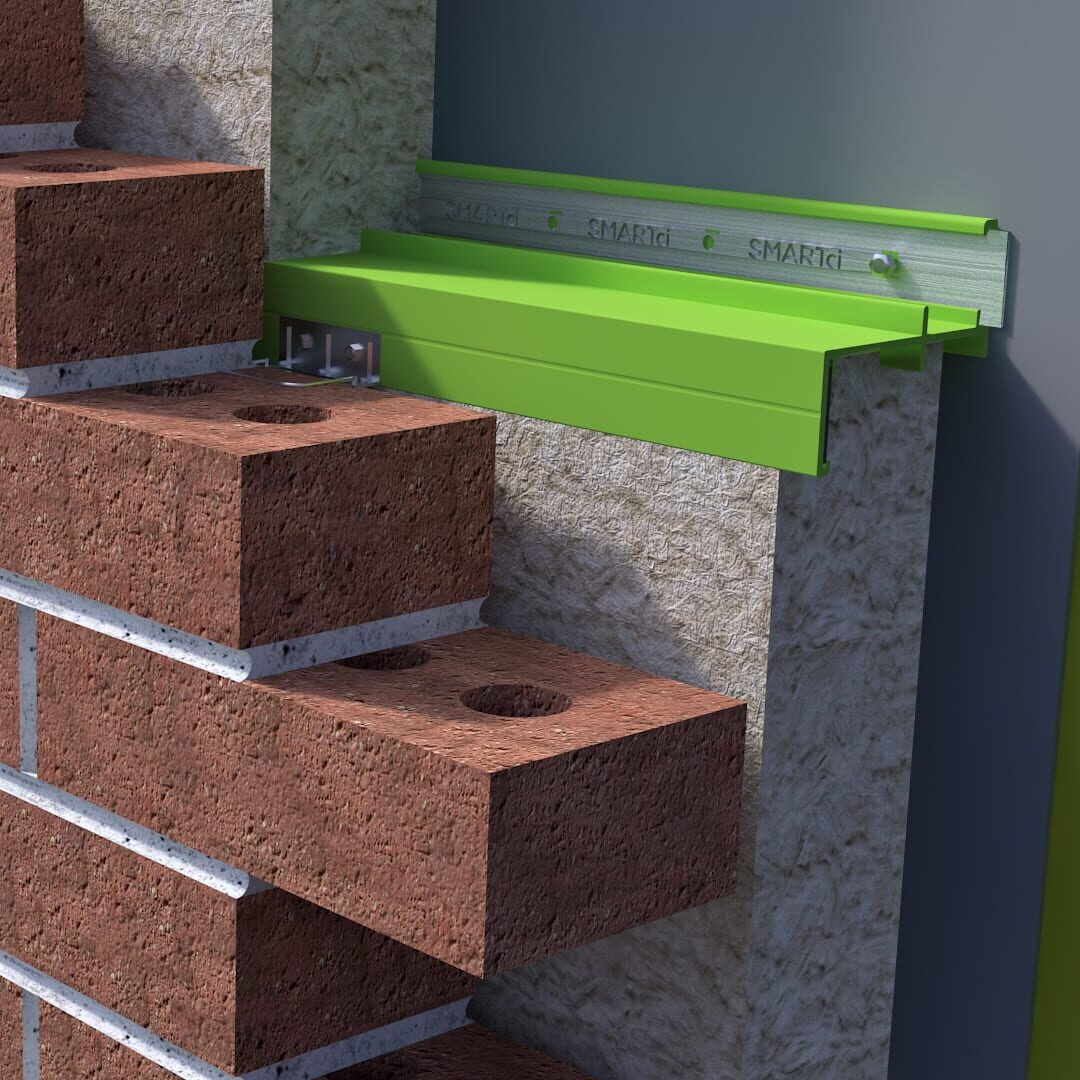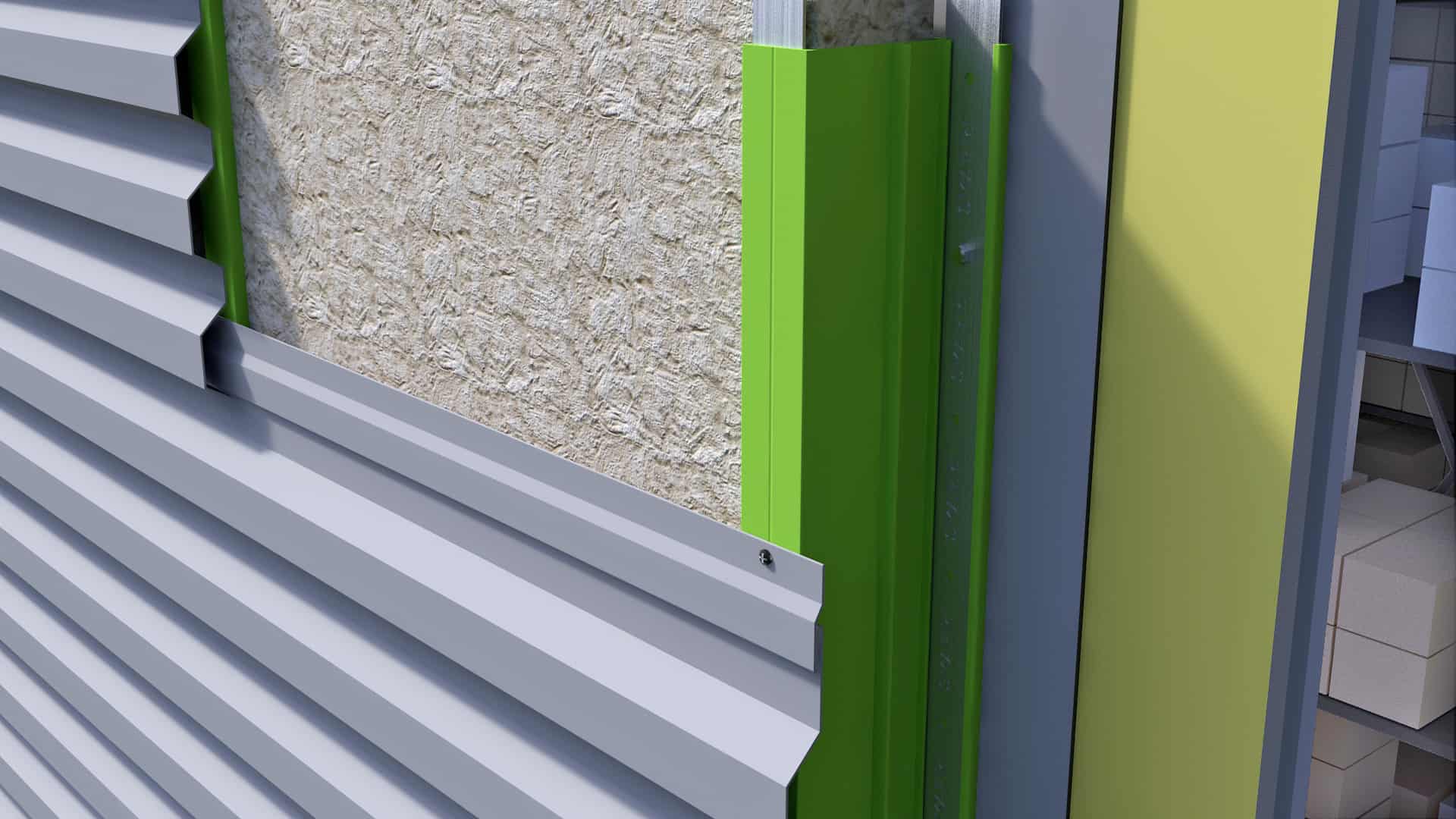
Understanding Fiberglass Z-Girts and How to Choose the Right Product
26 Sep 2023
Acelab Team
Selecting the right fiberglass Z-girt helps to ensure effective continuous insulation cladding attachment. The best Z-girt choice will align with insulation needs, cladding materials, and building specifications, to guarantee optimal thermal performance, corrosion resistance, and structural integrity for sustainable and well-insulated structures. Ease of installation and compliance with building codes are also essential considerations.
What is a Z-Girt?
A Z-girt is a cladding support system. It functions as a dual-purpose attachment system for continuous insulation and cladding on structures. Fiberglass Z-girts offer corrosion resistance, which makes it well-suited for many environments. Its lightweight yet sturdy composition facilitates easy installation while ensuring structural integrity. As part of a cavity wall system design, Z-girts promote effective moisture management by creating an airspace behind the cladding, to enable ventilation and prevent moisture buildup.

This combination optimizes insulation performance while also providing a secure and durable attachment for exterior cladding, which makes it an essential element in modern building envelope systems.
Z-girts can be installed either horizontally or vertically, depending on the specific requirements of the construction project and the desired orientation of the cladding. When installed horizontally, Z-girts create a continuous support system for cladding materials, and they can also accommodate continuous insulation within the cavity.
When installed vertically, Z-girts are often used to support cladding materials on façades that require a different layout or design. The versatility of Z-girts allows them to adapt to various building designs and styles while providing the necessary structural support for exterior cladding materials.
Understanding Continuous Insulation and Cladding
Fiberglass Z-girts facilitate continuous insulation by creating a cavity, or airspace, between the exterior cladding and the building's structural frame. This design allows for the placement of insulation within the cavity, which results in a layer of continuous insulation that covers the entire wall surface. Additionally, the Z-girt serves as a support system for the cladding material while maintaining separation from the structural frame.
When combined, continuous insulation and architectural cladding work in tandem to optimize building performance. By creating a thermal break between the cladding and the frame, the fiberglass Z-girt prevents the direct conduction of heat through the building envelope. This improves energy efficiency by reducing heat loss or gain, and enhancing the overall insulating performance of the wall system. The continuous insulation within the cavity, combined with the Z-girt's design, contributes to maintaining consistent indoor temperatures, lowering energy consumption, and improving occupant comfort.
Benefits of Z-Girts
The Z-girt design provides many benefits, including improved energy performance, durability, design versatility, and occupant comfort, which makes it a preferred choice for modern building envelope solutions. Continuous insulation and Z-girt cladding systems can contribute to achieving sustainable building certifications by meeting energy efficiency requirements.
Structural Support
Fiberglass Z-girts offer structural support benefits by securely anchoring cladding materials, distributing loads evenly, and creating an insulated air gap. The lightweight yet durable composition accommodates expansion, while corrosion resistance ensures longevity. Fiberglass Z-girts protect the structural frame by preventing direct contact with weather, and the versatile design complements various cladding options, to help both stability and aesthetic values.
Thermal Performance
Fiberglass Z-girts enhance thermal performance. The design minimizes heat transfer through the building envelope, to reduce thermal bridging. The Z-girt's fiberglass composition provides inherent insulation properties, which further limits heat conduction. This insulation configuration helps maintain consistent indoor temperatures, improves energy efficiency, and reduces heating and cooling costs. By preventing direct contact between cladding and the frame, fiberglass Z-girts contribute to a more comfortable and energy-efficient building.
Moisture Management
As an element of cavity wall construction, the use of Z-girts contributes to moisture management by creating an air gap between the cladding and the structural frame.
The air gap allows for proper ventilation and the dissipation of moisture that can accumulate behind cladding. Should moisture infiltrate the system, it can drain away from the structural components, to prevent potential damage or deterioration.
Z-girts also act as a barrier, by eliminating contact between the cladding and the structural frame, thereby reducing the risk of moisture transfer through capillary action.
By promoting ventilation and creating separation, moisture-related issues can be averted, such as mold growth, rot, and degradation of building materials, to enhance the durability and longevity of the wall assembly.
Aesthetic Versatility
Z-girts offer a hidden support system that can be concealed behind different types of cladding, enabling a clean and uniform appearance. Z-girts elevate design possibilities by supporting various cladding materials in cavity wall assemblies. They enable architects and designers to craft unique architectural interpretations. This versatility accommodates a wide range of architectural styles and finishes, including metal panels, wood, stone, terra cotta, glass and more.
By offering both functional support and architectural flexibility, Z-girts enhance a building's aesthetic appeal and provide opportunities for creative expression in execution of the overall design and visual identity of the structure.
Anatomy of Z-Girts

Z-girts consist of a horizontal component shaped like the letter "Z" in cross-section. Its structural value in a cavity wall system lies in its design, which provides support and stability. The Z-girt is attached to the building's structural frame and serves as a substructure to secure cladding materials. This configuration distributes the weight of the cladding evenly and prevents direct contact between the cladding and the frame, to safeguard against weather-related damage and corrosion. The strategic placement and configuration of Z-girts enhance the wall assembly's structural integrity, energy efficiency, and moisture management, to make it a valuable component in cavity wall systems.
Z-Shaped Cross Section
The significance of the Z-shaped cross-section in a Z-girt lies in its structural effectiveness and versatility. The “Z” shape provides inherent strength and rigidity, and distributes loads evenly across its horizontal span. This design minimizes stress concentrations and enhances the girt's load-bearing capacity.
The Z-girt's shape is integral to creating an insulated cavity between the cladding and the structural frame, to reduce thermal bridging and enhance energy efficiency. Its strategic design allows for secure cladding attachment while promoting ventilation and moisture management. The Z-shaped cross-section combines structural support, thermal performance, and moisture protection, to make it a valuable and efficient component in modern building envelope systems.
Material Types
Variations in materials within the category of fiberglass Z-girts include diverse compositions to meet specific construction demands:
Fiberglass Composites
Z-girts are often crafted from fiberglass combined with resins, for a balance of strength, durability, and insulating properties.
Reinforcements
Some Z-girts integrate additional materials like carbon fiber or other composites for heightened structural integrity and load-bearing capacity.
Specialized Coatings
Variants might feature coatings for improved corrosion resistance, UV protection, and weather resilience, to help ensure extended performance life.
Fire-Rated Formulations
Tailored for fire safety, specific Z-girts incorporate fire-retardant additives to adhere to stringent fire-rated requirements.
Applications
Fiberglass Z-girts are well-suited to a range of applications in building construction, particularly those that involve cavity wall exterior cladding systems. Some typical applications include:
Commercial Buildings
Fiberglass Z-girts are commonly used in the construction of commercial structures, such as office buildings, retail centers, and hotels, where they provide reliable support for a wide array of cladding materials.
Residential Buildings
Fiberglass Z-girts can be employed in residential construction to support cladding materials and contribute to energy-efficient building envelopes.
Educational Institutions
Schools and universities often use fiberglass Z-girts to create visually appealing and thermally efficient facades.
Healthcare Facilities
Z-girts are ideal for healthcare buildings, by ensuring energy efficiency and contributing to reduced sound transmission, while adhering to stringent construction standards.
Mixed-Use Developments
For mixed-use complexes, Z-girts are part of a system that offers design flexibility to accommodate diverse cladding materials and architectural styles.
High-Rise Buildings
Fiberglass Z-girts support cladding on high-rise buildings, to accommodate many cladding options, while also contributing to thermal management and enhanced energy efficiency.
Fiberglass Z-girts can be found in a broad spectrum of building applications, where their structural support, thermal performance, and versatility offer valuable contributions to the overall design and construction process.
Find Industry-Leading Z-Girts with Acelab
Acelab is a cloud-based collaboration platform that offers a range of tools and resources to help architecture professionals research, compare and select building products for their projects. With Acelab, users can access product data, technical specifications, and CAD details from leading manufacturers, as well as tools to create and manage project libraries, product lists, and specification documents.
Acelab is designed to help architecture professionals save time and streamline their workflows by providing a centralized source of information and tools for building product research and specification tasks. Schedule a demo today to see what Acelabs can do for you and your team!
